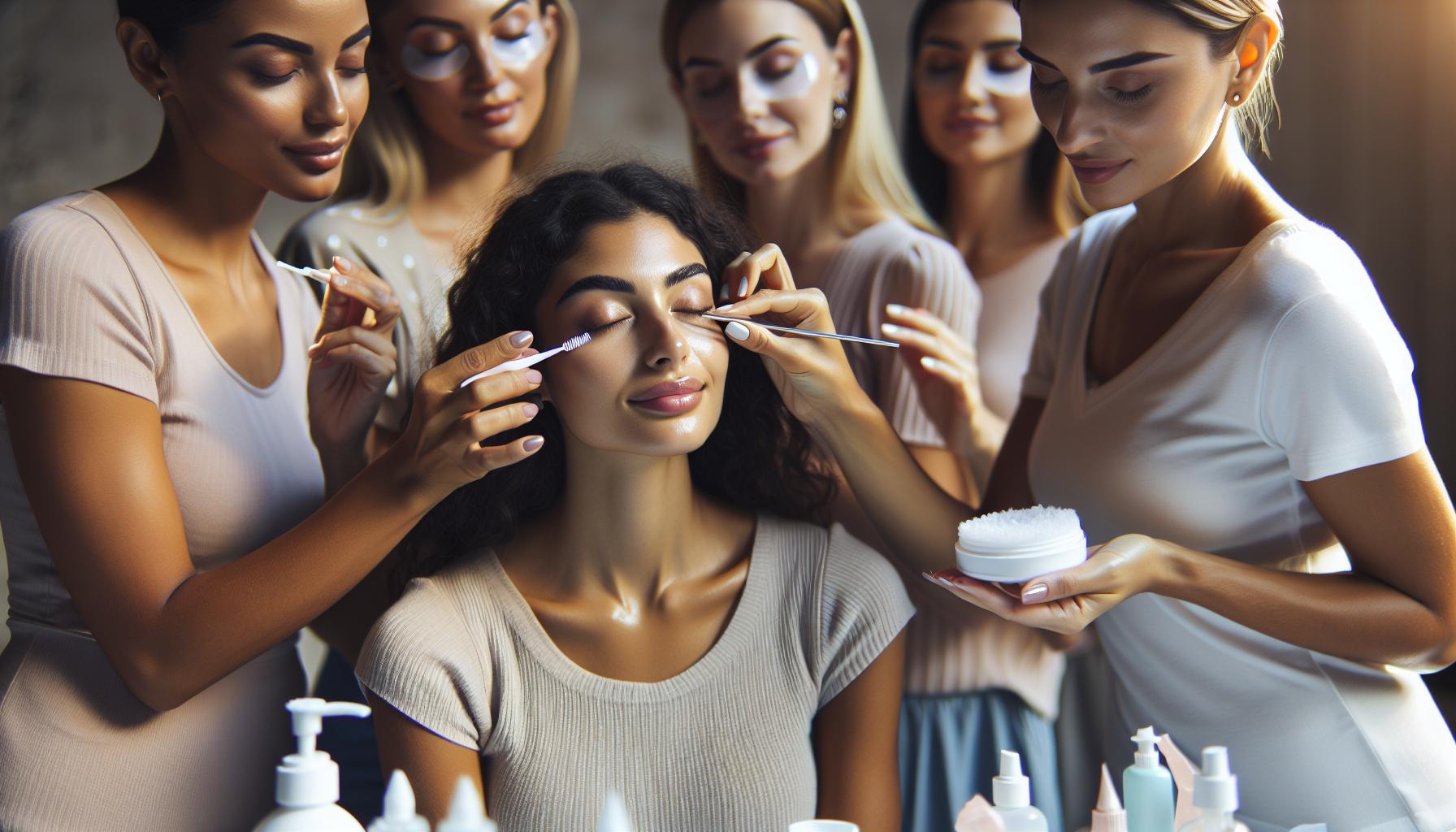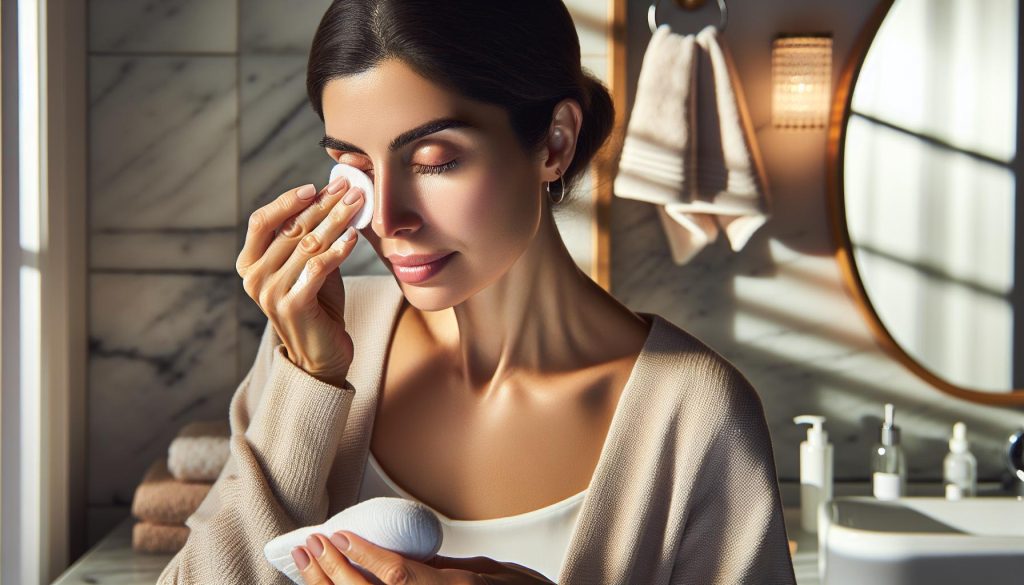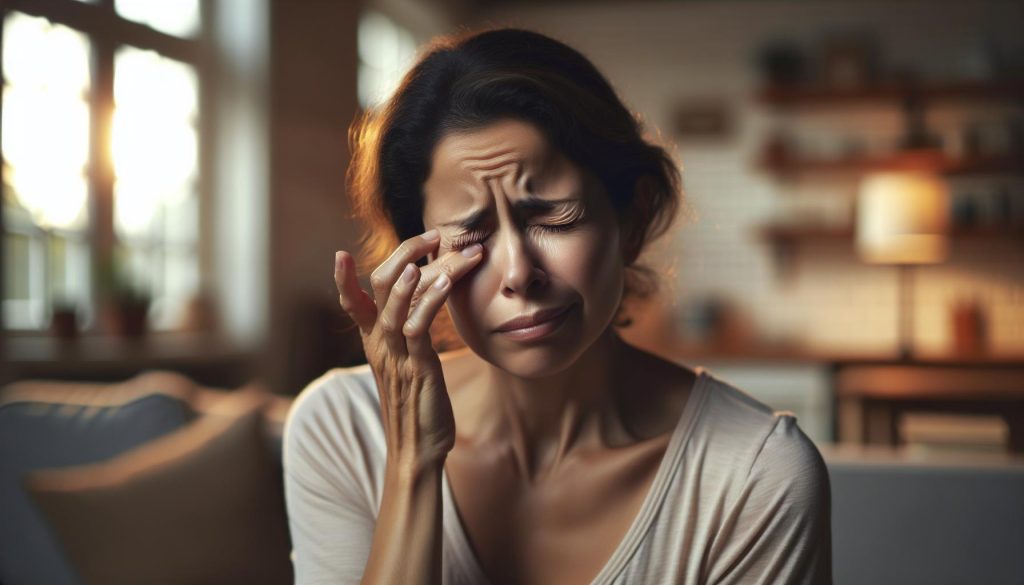Styes are not only common but can also be frustrating and uncomfortable, impacting your daily life and self-esteem. This small, painful bump on your eyelid, caused by a bacterial infection in the oil glands, can lead to redness, swelling, and even some vision impairment if not addressed properly. Understanding how to safely remove a stye can empower you to take control of your eye health and alleviate discomfort effectively.
In this guide, we’ll explore safe techniques for stye removal and provide practical insights to help you navigate this situation. From at-home remedies to when to seek professional help, we’ll cover everything you need to know to ensure your eyes remain healthy and free from irritation. So, let’s delve into the best practices for managing styes to get you back to feeling your best.
Understanding What a Stye Is and Its Causes
When it comes to eye health, a stye can be an uncomfortable yet common condition that many may encounter. A stye, medically known as a hordeolum, is a small, red, painful bump that forms along the eyelid, usually due to a bacterial infection. This infection occurs in the oil glands of the eyelid, often triggered by factors such as poor hygiene, stress, or underlying skin conditions like blepharitis. Recognizing the characteristics and causes of styes can empower you to take proactive steps in managing your eye health effectively.
There are several risk factors that can lead to the formation of a stye. Poor hygiene practices, such as failing to wash your hands before touching your eyes or not removing makeup thoroughly, can introduce bacteria to the eyelid area, increasing the likelihood of infection. Additionally, individuals with conditions like acne or seborrheic dermatitis are more prone to developing styes as these conditions can lead to clogged oil glands. Stress and hormonal changes may also play a significant role, affecting immune response and making one more susceptible to infections.
is crucial, as this knowledge enables you to recognize early symptoms and take preventive measures. Keeping eyelids clean, managing stress, and maintaining a healthy skincare routine can reduce the risk of developing styes. If you notice the early signs of a stye, such as slight swelling or redness on the eyelid, taking immediate action can help alleviate discomfort and speed up recovery. Always remember, being mindful of your eye hygiene is an essential part of maintaining overall eye health.
Common Symptoms of an Eye Stye
A stye can be frustrating and uncomfortable, but recognizing its symptoms early can help you effectively manage the condition. The most common initial sign of a stye is the appearance of a small, tender bump on the eyelid, which may resemble a pimple or boil. This bump is often red and swollen, reminding you of how significant even a minor inconvenience can feel. In many instances, the affected eyelid may also become sensitive to touch, making everyday activities like blinking or applying makeup feel uncomfortable.
As the stye progresses, you may notice additional symptoms that can vary in severity. This can include increased redness around the affected area, a sensation of grittiness in the eye, and even tearing or watery eyes as your body’s immune response kicks in. The stye may also produce a discharge, which can sometimes lead to crustiness on the eyelid, especially upon waking. Pay attention to these signs because they indicate not only infection but also potential irritation that could benefit from prompt attention.
If the stye does not resolve on its own, you might begin to experience pain or discomfort that intensifies as the infection progresses. In more severe cases, you could feel swelling extending from the stye itself to surrounding tissues, which might lead to challenges with vision. While most styes are benign and heal on their own within a week or so, recognizing these symptoms can guide you in implementing safe and effective home remedies or seeking professional care if necessary.
To alleviate discomfort and promote healing, consider maintaining a clean eyelid area and avoiding makeup and contact lenses during this time. Recognizing your body’s signals and responding appropriately empowers you to manage your eye health proactively, keeping your focus on recovery.
Safe Home Remedies for Stye Relief
Dealing with a stye can feel frustrating, but there are several effective home remedies that can help alleviate discomfort and promote healing. One of the most trusted and simple approaches is the application of warm compresses. This method not only provides immediate relief from pain but also encourages the stye to drain naturally. To use a warm compress, soak a clean cloth in warm water, wring it out, and gently place it over the affected eyelid for about 10 to 15 minutes, several times a day. This can help reduce inflammation and may speed up recovery.
Maintaining proper eyelid hygiene is crucial. Gently cleaning the area around your eye with a mild soap and water solution keeps the stye from worsening. Avoid any harsh chemicals or products, as these can irritate the eye further. If you wear makeup, it’s best to avoid applying it until the stye has resolved, as it can introduce bacteria and exacerbate the situation. Additionally, take a break from wearing contact lenses until your eye has healed, switching back to glasses to minimize irritation.
Other safe remedies include over-the-counter pain relievers, which can help manage discomfort. There are also specialized stye ointments available at most pharmacies that can assist in soothing the area and facilitating healing. However, always ensure that any medication you choose is suitable for use around the eyes.
Lastly, incorporating natural ingredients such as chamomile can offer soothing benefits. Chamomile tea bags, once cooled, can also be placed as a compress. The anti-inflammatory properties of chamomile can help reduce swelling and irritation. Remember to keep the area clean and to consult a healthcare professional if symptoms persist or worsen, as some cases may require further treatment. By following these remedies, you can take proactive steps to support your eye health while dealing with a stye.
When to Seek Professional Medical Help
Identifying for a stye is crucial for ensuring swift recovery and avoiding complications. While many styes can be treated effectively at home with warm compresses and proper hygiene, some situations warrant a visit to an eye care professional. If a stye persists for more than a week without improvement, or if you notice increased discomfort, swelling, or redness, these could be signs of a more serious infection requiring medical attention.
Furthermore, if the stye starts affecting your vision or if you experience significant pain, it’s essential to consult with an eye care specialist. Conditions such as cellulitis, which is an infection of the surrounding skin, can develop from an untreated stye. Be particularly vigilant if you have a history of eye problems or if you have noticed changes in your sight, as this may indicate a deeper issue that requires intervention.
In addition, if you have recurring styes or multiple styes appearing at once, it can be an indication of underlying health issues that may need to be addressed. Your healthcare provider may recommend various treatment options, including prescription antibiotics or procedures to drain the stye, which are typically safe and quick. Remember, your eye health is paramount; when in doubt, don’t hesitate to take action. Making informed choices will empower you to take charge of your health and well-being.
Effective Over-the-Counter Treatments
The discomfort of a stye can be both annoying and concerning, but fortunately, several can help alleviate symptoms and promote healing. One of the most recommended products is a warm compress, which can be easily made at home. Applying a warm, damp cloth to the affected area for 10 to 15 minutes several times a day can help reduce swelling and encourage the stye to drain naturally.
In addition to warm compresses, you may consider using over-the-counter pain relievers, such as ibuprofen or acetaminophen, to manage any discomfort associated with a stye. These medications not only help reduce pain but also lower inflammation, making you feel more comfortable during this healing process.
Another useful option is antibiotic ointments. While not always necessary, applying a topical antibiotic like bacitracin can help prevent bacterial infections from exacerbating the condition. Look for ointments that specify they are safe for use around the eyes. However, ensure that you consult with a pharmacist if you have concerns regarding interactions with other medications or conditions.
While these treatments can significantly help with symptom relief, it’s essential to always prioritize hygiene. Regular hand washing before touching your eyes, avoiding the use of eye makeup until the stye resolves, and not squeezing or attempting to pop the stye on your own can all greatly enhance your recovery efforts. With these accessible options and a little patience, you’ll be well on your way to eye comfort and health.
How to Prevent Future Styes from Forming
To keep those pesky styes at bay, implementing a few preventive measures can make a world of difference. Regular eye hygiene practices can significantly reduce your likelihood of experiencing a stye. Start by washing your eyelids daily with a gentle cleanser or specifically formulated eyelid scrub. This not only removes debris and excess oil but also prevents clogged glands around your eyelids. Be sure to rinse thoroughly, as residual cleanser can lead to irritation.
Along with maintaining cleanliness, it’s crucial to avoid touching your eyes with unwashed hands. Try to develop a habit of regularly sanitizing your hands, especially before touching your face. If you wear makeup, be vigilant about the products you use. Follow these best practices for eye makeup:
- Replace makeup regularly: Mascara and eyeliner should be replaced every three months to avoid bacterial growth.
- Avoid sharing cosmetics: This can transfer bacteria and increase your risk of infection.
- Remove makeup before sleeping: Sleeping in your makeup can block glands and lead to irritation.
Another key practice involves managing underlying conditions that may contribute to styes, such as blepharitis or acne. If you struggle with these conditions, consider consulting with a healthcare provider for appropriate treatment options and strategies.
Lastly, keeping your overall health in check can boost your body’s natural defenses-ensuring a balanced diet, staying hydrated, and managing stress through practices like yoga or meditation can enhance immune function, making it less likely for a stye to develop. Embracing these preventive measures not only helps in avoiding styes but also contributes to your overall eye health and well-being.
Natural Ingredients That Aid Stye Recovery
Natural remedies can be a comforting and effective way to aid recovery from a stye, thanks to certain ingredients that possess soothing and antibacterial properties. Incorporating these natural elements into your care routine can help reduce inflammation, relieve discomfort, and promote healing at home.
One of the most recommended ingredients is tea tree oil, well-known for its powerful antibacterial properties. When diluted with a carrier oil, such as coconut oil, it can be gently dabbed around the affected area (avoiding direct application on the stye) to help combat bacteria. Chamomile tea, with its anti-inflammatory properties, can be brewed and cooled; using a cotton ball, you can apply it directly to the eyelid for a soothing compress.
Another effective natural remedy is aloe vera gel. Known for its skin healing properties, it can be applied to the affected area to provide hydration and may help to reduce swelling. Additionally, warm compresses made from a mixture of warm water and Epsom salt can also speed up the healing process. Soaking a clean cloth in the solution and applying it to the stye for several minutes can open up blocked glands, making the area less painful.
Here’s a quick guide to these remedies:
- Tea Tree Oil: Dilute with a carrier oil and apply around stye area.
- Chamomile Compress: Brew chamomile tea, cool, and apply with a cotton ball.
- Aloe Vera Gel: Apply directly to soothe and hydrate the area.
- Epsom Salt Compress: Mix with warm water, soak a cloth, and apply as a compress.
Using these natural ingredients not only supports the healing process but also enhances your overall eye health. However, always remember to conduct a patch test for any new treatment to ensure there are no adverse reactions, and consult a healthcare provider if symptoms persist.
Step-by-Step Guide to Warm Compress Application
Applying a warm compress is one of the most effective home remedies for relieving the discomfort and promoting healing of a stye. This simple technique utilizes the soothing properties of warmth to help unblock oil glands, reduce swelling, and speed up recovery. Here’s how to prepare and use a warm compress properly to ensure you’re maximizing its benefits.
Start by gathering your materials. You’ll need a clean washcloth, warm water, and, if desired, a bowl to assist with soaking the cloth. First, soak the washcloth in warm water-aim for a temperature that is comfortable against your skin; it should feel soothing rather than irritating. If you want to enhance the healing effects, you can mix a small amount of Epsom salt into the water to help with inflammation.
Next, wring out any excess water from the cloth before applying it directly to the affected eyelid. Make sure the cloth is not dripping to prevent any mess or discomfort. Allow the compress to rest on the stye for about 5 to 10 minutes. This duration is crucial as it provides enough time for the warmth to penetrate and work on the clogged glands.
To maintain the warmth, you may want to re-soak the cloth in warm water every few minutes. This step ensures consistent heat application, which can enhance the effectiveness of the treatment. After the compress has cooled, you can gently pat the eyelid dry with a clean towel.
For added relief, repeat this process up to three times a day. Consistency is key, especially within the first few days of noticing a stye. This routine not only aids in healing but also helps diminish pain and discomfort associated with the stye.
When performed correctly, the warm compress technique is not only safe but a reliable method for stye relief. Just remember to keep everything clean to avoid introducing bacteria to your eye, and always wash your hands before touching your face to maintain proper hygiene.
Debunking Myths About Styes and Their Treatment
While styes are common and usually harmless, various myths can cloud your understanding of how to properly manage and treat them. One prevalent misconception is that squeezing or attempting to pop a stye will hasten healing. In reality, this can lead not only to increased irritation but also to the risk of spreading infection, ultimately prolonging the recovery process.
Another myth is that styes only affect those with poor hygiene. While good hygiene can help prevent styes by minimizing bacteria on the eyelids, anyone can develop one due to various factors like hormonal changes, allergies, or simply stress. It’s essential to understand that styes are often related to blocked oil glands and not simply a reflection of cleanliness.
Many people also believe that only medically prescribed treatments can effectively alleviate styes. While over-the-counter options exist, simple home remedies, such as warm compresses, can be equally effective and are backed by medical advice. Applying a warm compress several times a day can open blocked glands, ease discomfort, and promote healing without the need for pharmaceuticals.
Furthermore, some may think that styes are contagious. This is false; styes are not spread from person to person. However, they can arise from the same factors that cause other eye issues, such as allergies or bacteria, which can affect multiple individuals in the same environment. By demystifying these misconceptions, you can approach stye treatment with clarity and confidence, ensuring appropriate care and a smoother path to recovery.
Aftercare Tips for a Healthy Recovery
For those navigating the discomfort of a stye, understanding aftercare can make a significant difference in your recovery journey. This painful and often unsightly bump not only warrants proper treatment but also necessitates careful attention to care habits post-treatment to ensure healing and comfort.
One of the most effective practices is to maintain consistent eye hygiene. Gently washing the eyelid with a mild soap or a specially formulated eyelid scrub can help remove any oils and debris that might exacerbate the condition. Ensure you use clean hands when touching the eye area to avoid introducing additional bacteria. Additionally, refrain from wearing eye makeup until the stye has healed completely; this not only prevents irritation but also minimizes the risk of bacteria from makeup products infecting the stye or surrounding tissue.
Another crucial aspect is the application of warm compresses. This simple yet effective method can be repeated several times throughout the day to help alleviate discomfort and promote drainage. Soak a clean cloth in warm water, wring out the excess, and gently press it against the stye for 10-15 minutes. This step will not only provide soothing relief but can also facilitate faster recovery by helping to unclog any blocked oil glands.
Lastly, pay attention to your overall health and lifestyle habits. Staying hydrated, maintaining a balanced diet rich in vitamins and antioxidants, and managing stress through relaxation techniques can significantly enhance your body’s healing capabilities. If you notice any changes that worsen your stye or prolong your discomfort-such as increased redness, swelling, or pus-don’t hesitate to reach out to a healthcare professional for advice. By taking these aftercare steps, you can support a healthy recovery and potentially prevent future styes from forming.
Understanding the Role of Hygiene in Eye Care
Maintaining proper hygiene is pivotal in safeguarding your eyes and preventing the recurrence of styes. Eye hygiene serves as the first line of defense against infections and inflammation, which are often culprits behind stye formation. While it may seem simple, the way you care for your eyelids can make a substantial difference in both preventing and managing styes.
To foster optimal eye hygiene, begin with a gentle cleansing routine. Use a mild, hypoallergenic soap or a specially formulated eyelid scrub to wash your eyelids daily. This practice will help remove accumulated oils, dirt, and makeup residue that can clog the oil glands around the eyes. When washing your eyelids, employ a soft touch-avoiding the urge to scrub too hard, as this may irritate the area further. Moreover, it is essential to always wash your hands before touching your face or applying any treatment to prevent introducing new bacteria.
Another essential hygiene practice is to avoid sharing personal items, particularly towels and makeup, which can harbor bacteria. For those who wear makeup, skip the eye cosmetics until the stye heals to minimize irritation and the risk of spreading bacteria. If makeup is necessary, use items that are labeled as hypoallergenic and dispose of any products that have come into contact with the affected eyelid post-issue to prevent future infections.
It’s also wise to frequently disinfect contact lenses and ensure they are stored in a clean case. Use a new case every three months, and abide by the recommended wear time for your lenses. Additionally, remember to replace mascara every three months as it can quickly collect bacteria, particularly if applied near an infected area. By integrating these hygiene practices into your daily routine, you not only improve the chances of a swift recovery but also significantly reduce the likelihood of future styes and other eye concerns.
FAQs: Your Questions About Styes Answered
A stye can be an uncomfortable and unsightly issue, but understanding how to manage and remove one safely can ease your worries. This eyelid bump, often caused by a bacterial infection of the oil glands, typically doesn’t require drastic measures for removal. Instead, many individuals find relief through simple home techniques. It’s important to remember that while styes can be annoying, they are usually harmless and often resolve on their own with proper care.
One of the most effective approaches to support the natural healing of a stye is the application of warm compresses. Applying a warm compress helps to loosen any blockage in the oil gland, promoting drainage and reducing inflammation. Here’s a practical method to do this: soak a clean cloth in warm water (ensure it’s not too hot to avoid burns), wring it out, and gently place it over your closed eyelid for about 10-15 minutes. Repeat this several times a day until you notice improvement. This not only aids in healing but can also provide soothing comfort.
If you notice that a stye persists beyond a few days or becomes more painful or swollen, it might be time to consult with a healthcare provider. They may recommend a topical antibiotic ointment or, in some cases, carefully draining the stye for faster relief. It’s crucial to avoid squeezing or trying to pop it yourself, as this could spread the infection or make things worse.
In your quest for a stye-free existence, practicing good hygiene is pivotal. Regularly washing your eyelids with lukewarm water and a mild, hypoallergenic soap can help keep oil and bacteria at bay. Remember to handle your eyes with care – wash your hands frequently, avoid touching your eyes unnecessarily, and refrain from sharing makeup. These simple preventative measures can significantly reduce the likelihood of styes forming in the future, granting you peace of mind in your daily life.
By understanding these safe removal techniques and incorporating proactive hygiene practices into your routine, you can effectively manage styes and maintain healthy eyes. Always prioritize your comfort and consult with a healthcare professional when in doubt, empowering yourself with knowledge and care.
Faq
Q: What is the best way to clean a stye?
A: The best way to clean a stye is to gently wash the affected area with warm water and mild soap. Avoid touching or squeezing the stye. You can also use a clean washcloth soaked in warm water as a compress for 10-15 minutes to help reduce swelling and discomfort.
Q: How long does it take for a stye to heal?
A: A stye typically heals within 5 to 7 days with proper care. However, if symptoms persist beyond this period or worsen, it’s essential to consult a healthcare professional for further evaluation.
Q: Can I pop a stye like a pimple?
A: No, you should not pop a stye. Popping it can increase the risk of spreading infection and may lead to complications. Instead, use warm compresses to help it drain naturally and alleviate discomfort.
Q: Are there any specific foods that can help with stye recovery?
A: Foods rich in vitamins A and C, such as carrots, spinach, and citrus fruits, can support immune health and may promote healing. Staying hydrated and maintaining a balanced diet also aids recovery.
Q: What home remedies can I use to ease stye discomfort?
A: In addition to warm compresses, you can try applying aloe vera gel to the affected area, which has soothing properties. Additionally, maintaining good hygiene and avoiding eye makeup can help reduce irritation while healing.
Q: What can I do if a stye keeps coming back?
A: If you experience recurrent styes, it may be due to underlying conditions like blepharitis. Regular eyelid hygiene, such as using eyelid scrub pads or diluted baby shampoo, can help manage and prevent future occurrences.
Q: How can I differentiate between a stye and a chalazion?
A: A stye is a painful, swollen bump caused by an infection, while a chalazion is usually a painless lump caused by blocked oil glands. If unsure, consult a healthcare professional for accurate diagnosis and treatment guidance.
Q: Is it safe to wear contact lenses with a stye?
A: It is recommended to avoid wearing contact lenses while you have a stye. Doing so can aggravate the condition and increase the risk of further infection. Consider switching to glasses until the stye heals completely.
To Conclude
Now that you’ve explored effective and safe techniques to remove a stye from your eye, remember that timely action can lead to better healing. If you notice persistent discomfort or worsening symptoms, don’t hesitate to consult an eye care professional for personalized advice. For more insights on eye health, check out our articles on managing eye infections and tips for maintaining healthy vision.
Empower yourself further by subscribing to our newsletter, where we share the latest in women’s health, beauty routines, and effective skincare tips tailored just for you. Don’t let a stye disrupt your confidence-act now and take charge of your eye health. If you found this guide helpful, share your thoughts or experiences in the comments below, and explore our related content to continue your journey toward optimal wellness. Your health deserves the best!




